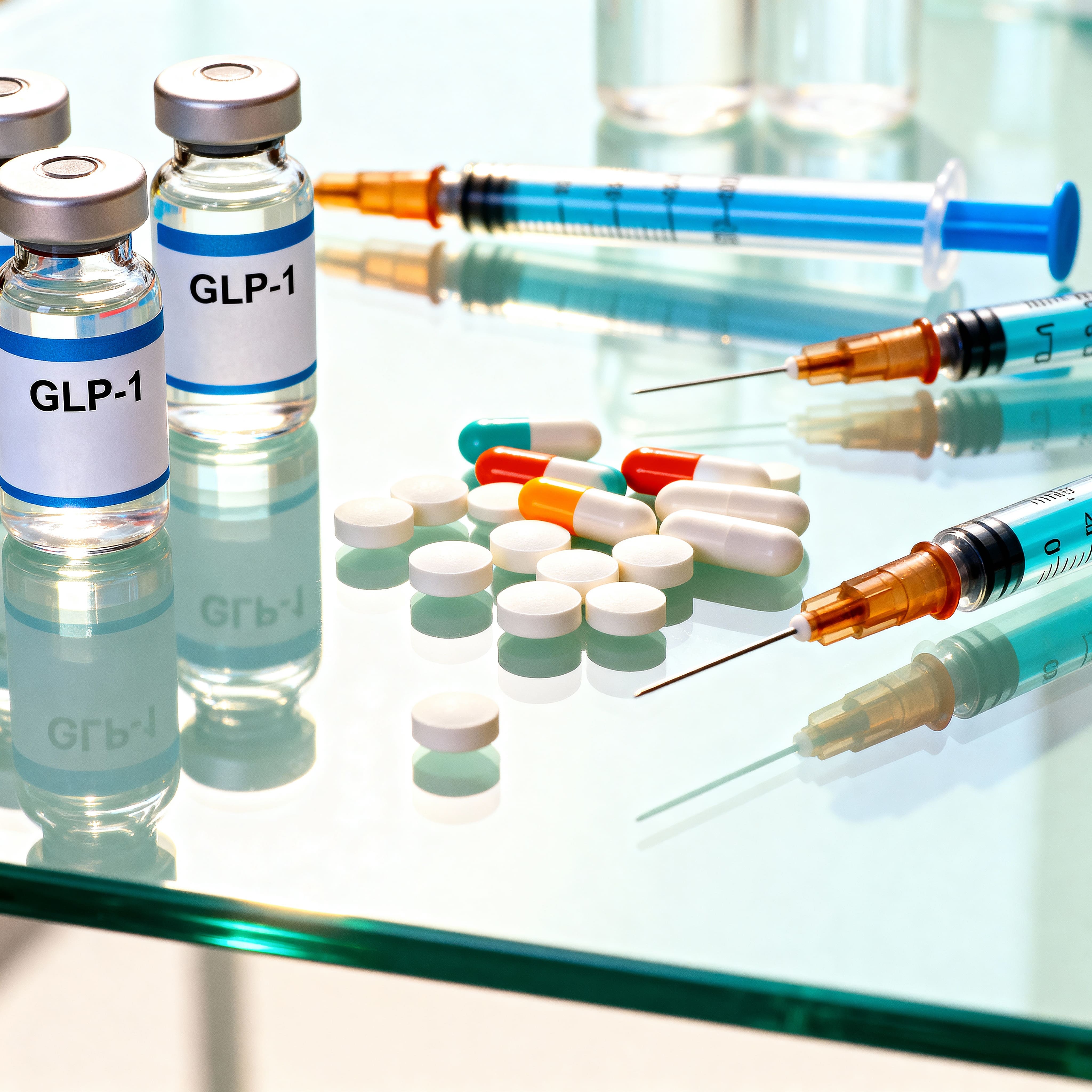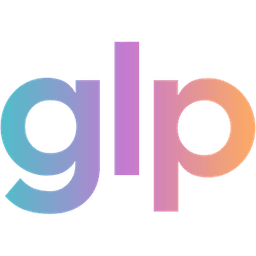Pill Versions of GLP-1s: Are You Missing Out If You Skip the Needles?
Author
glp winnerDate Published
- Twitter
- Facebook
- LinkedIn
- Instagram
- Copy Link

If you’ve been hesitant about GLP-1 injections, you’re not alone. Many people stop short of starting medication because the idea of a weekly shot feels intimidating. Now, the next frontier in GLP-1 therapy—pill versions—is closing in fast. But will skipping the needle mean missing out on results? Let’s separate the science from the hype.
How GLP-1 Pills Actually Work
GLP-1 (glucagon-like peptide-1) drugs mimic a natural hormone that helps regulate appetite, blood sugar, and digestion. They’ve transformed diabetes and weight-loss treatment, but there’s a catch: they’re made from peptides, which are easily destroyed by stomach acid. That’s why most current GLP-1s—like Ozempic, Wegovy, and Mounjaro—are injections.
To make a GLP-1 pill, researchers had to solve two big problems:
- Protect the peptide from stomach acid and enzymes.
- Get it absorbed through the gut lining into the bloodstream.
That’s a tough chemical puzzle—and explains why oral GLP-1s are only now beginning to emerge.
What’s Already on the Market (and What’s Next)
The first breakthrough came with Rybelsus (oral semaglutide), approved in 2019 for type 2 diabetes (FDA label). It uses an absorption enhancer that lets a small fraction of the drug survive digestion. But it’s a high-maintenance routine: take it first thing in the morning, on an empty stomach, with a few sips of water, then wait 30 minutes before eating. (NIH review)
Even so, Rybelsus proved that oral GLP-1s can work—and that opened the floodgates for more.
Coming soon: Novo Nordisk has filed for FDA approval of a 25 mg oral semaglutide (a “pill version” of Wegovy) for obesity. If approved, it’ll be the first oral GLP-1 for chronic weight management. A decision is expected in late 2025. (Press release)
Meanwhile, Eli Lilly is developing orforglipron, a next-gen non-peptide GLP-1 pill that doesn’t break down in the stomach. In early trials, participants lost about 12–13 % of body weight over 72 weeks—strong results for an oral drug (Reuters). Regulatory review could happen around the same time as oral Wegovy.
Not every attempt has succeeded: Pfizer’s oral GLP-1 danuglipron was halted in 2025 after possible liver-safety concerns (Reuters). Drug development is progress through failure—each attempt teaches the next generation what to fix.
Pills vs Injections: What Really Changes
Injectable GLP-1s are absorbed directly into the bloodstream, giving steady, predictable effects over days or weeks. Pills, by contrast, must survive digestion before entering circulation, which makes absorption less consistent.
That affects more than convenience:
- Efficacy: Pills deliver smaller effective doses, so weight-loss results may be modest compared to weekly injections.
- Side effects: Oral drugs can irritate the stomach more because they sit there longer before absorption.
- Timing: Strict dosing rules (empty stomach, limited water, 30-minute wait) can make them harder to stick with.
In other words, GLP-1 pills may trade off a little potency for convenience.
Who Might Benefit Most
For some people, that trade-off is worth it. Oral GLP-1s may suit:
- Anyone with strong needle aversion.
- Early-stage obesity or diabetes patients who want moderate results.
- People with consistent daily routines who can follow timing instructions.
They may not be ideal for:
- Those who need significant, sustained weight loss.
- People with GI conditions or irregular meal schedules.
- Patients already using high-potency combination therapies.
Think of pills as “GLP-1 light”—a more approachable on-ramp to the medication.
Always work with your medical provider to understand what will and won't be a good fit for you. Treatments should always be tailored for your needs and situation, so the information in this post is only for general educational purposes.
Timeline: When Will Pills Be Available?
If Novo Nordisk’s oral semaglutide is approved, expect a U.S. launch in 2026. Eli Lilly’s orforglipron could follow around the same time, assuming smooth reviews. (Lilly overview)
Both companies are already testing new once-monthly injection formats as well—so by 2027, GLP-1s might range from daily pills to monthly shots. That’s a huge leap in accessibility.
Beware the Fakes: Compounding & TikTok “Patches”
The excitement around “needle-free” GLP-1s has also created space for bad actors. The FDA has issued warnings about unapproved products sold online under names like “research-use-only semaglutide” or “generic Ozempic.” (FDA advisory)
These are not prescription medications and do not come from licensed compounding pharmacies. They often bypass safety checks, contain mislabeled ingredients, or include incorrect doses—and they pose serious health risks.
That’s very different from prescription-based compounding through Telehealth providers and FDA-inspected 503A or 503B pharmacies, which must follow strict state and federal quality standards. Those pharmacies can legally compound GLP-1 medications for individual patients when commercial products are unavailable or medically unsuitable.
In short:
- Legitimate compounding = prescription-based, pharmacist-prepared, regulated.
- Grey-market “research” or “generic” GLP-1s = unapproved, risky, and often fake.
And about those “GLP-1 patches” all over TikTok? They’re not approved medications, and there’s no clinical evidence they contain or activate GLP-1 hormones (PBS). Most are just unregulated supplements in sticker form. If a product promises GLP-1-like results without a prescription, it’s marketing—not medicine.
What to Ask Your Doctor
If you’re curious about pill-based GLP-1s, here’s what to bring up with your healthcare provider:
- Are any oral GLP-1s approved for my condition (diabetes or weight loss)?
- How do they compare in effectiveness to injections?
- What dosing schedule and fasting rules apply?
- What are the common side effects?
- How likely is insurance to cover it?
Your provider can also help you spot unsafe compounded versions or fake online “alternatives.”
The Takeaway
Oral GLP-1s are real—and they’re coming. Pills like Rybelsus and the upcoming high-dose oral semaglutide could make treatment easier for people who’ve avoided injections. Still, convenience comes with trade-offs in absorption, consistency, and side effects.
The bottom line: don’t wait for hype to outpace science. Stick with FDA-approved options and trusted providers. The needle-free future of GLP-1 therapy is close—but not all that glitters on TikTok is medicine.
If you enjoy posts like these, you can subscribe to receive newsletter updates.
Sources
Keep Reading
.jpg&w=3840&q=100)
Step-by-step guide to compare GLP-1 telehealth & compounding providers—reviews, licensing, pharmacy accreditation—with GLP Winner support.

GLP-1 myths spread fast. Here’s the truth about Wegovy, Zepbound, side effects, “Ozempic face,” and more—backed by trusted sources.

Learn what microdosing GLP-1s really means, what’s known, what’s not, and key questions to ask your doctor before considering it.
